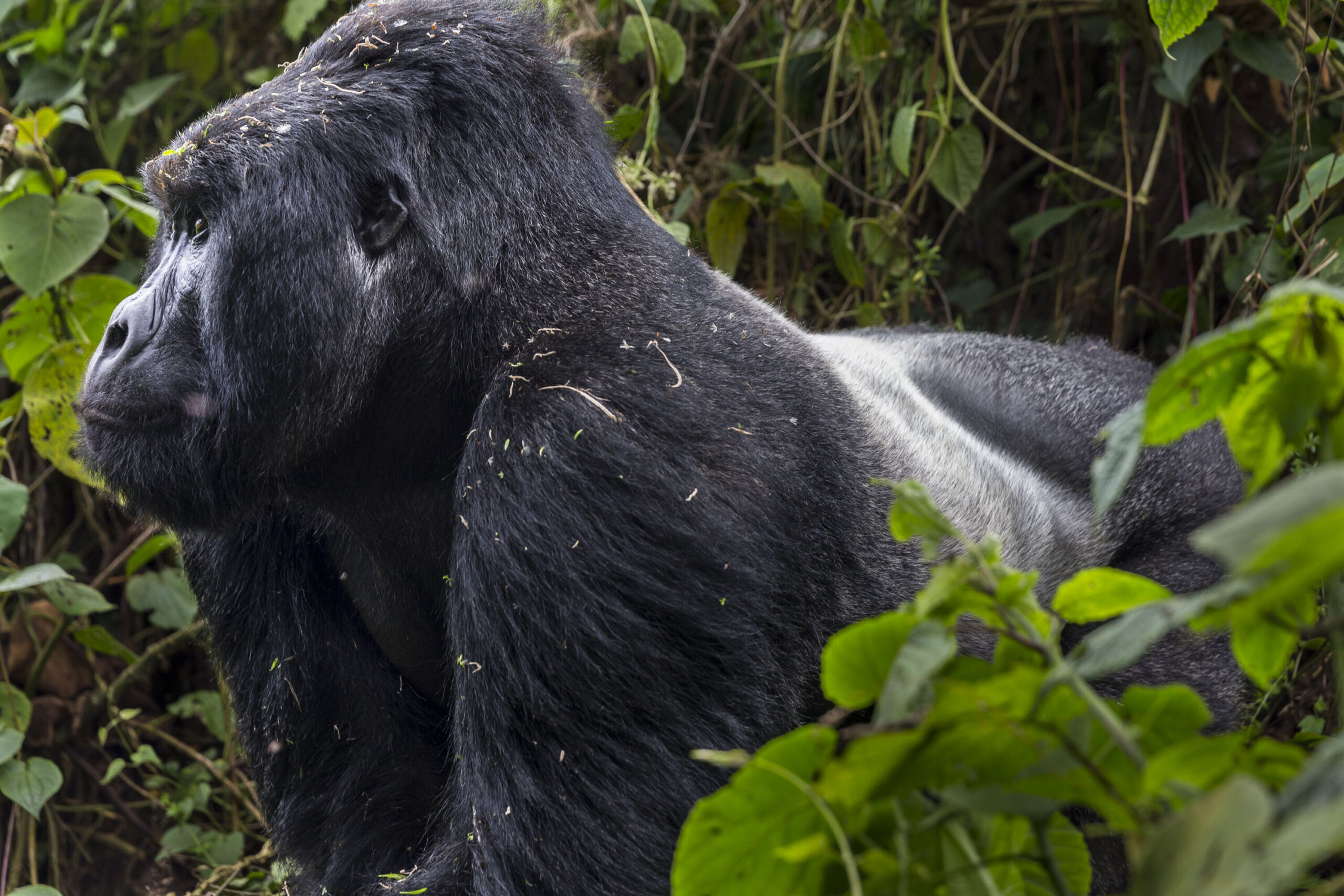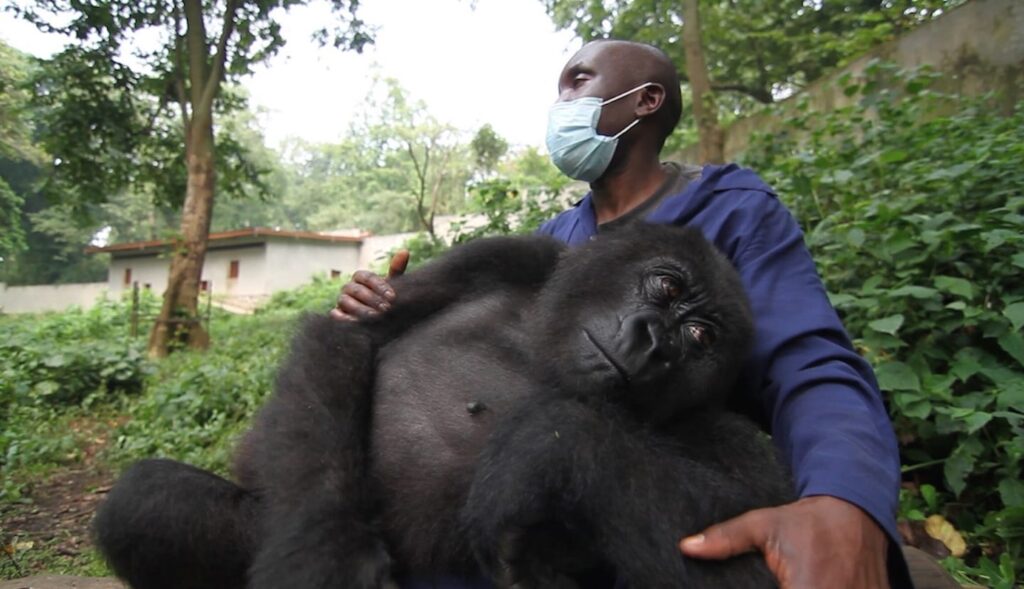How Mountain Gorillas Adapt to their Environment
How Mountain Gorillas Adapt to their Environment, Mountain gorillas adapt to their environment through various means, facilitated by their physical characteristics and the nature of their habitats. Mountain gorillas are an endangered ape species inhabiting the extensive and dense tropical forests of the Virunga Massifs, which encompass Mgahinga Gorilla National Park, Virunga National Park, Volcanoes National Park, and Uganda’s Bwindi Impenetrable National Park. These national parks are the sole locations globally that house the endangered mountain gorillas, of which there are approximately 1,063 individuals. The Virunga Massif area and Bwindi are dense tropical rainforests that have an elevation of up to 4000m or more above sea level, and the mountain gorillas still live in them.

The mountain gorillas were practically extinct by the 19th century but with the coming up of primatologists like Dian Fossey and gorilla conservationists, a steady recovery of the lost gorilla numbers has made them to be classed as endangered and not critically endangered by the year 2018. Mountain gorillas live in families or groups lead by a dominant silverback. A single gorilla family/group can consist of 5-30 individuals. Below are some of the ways how mountain gorillas adapt to their environment;
Mountain gorillas adapt to the very low temperatures in the high-altitude rainforests with the help of the long and thick fur that covers their body. The lengthy hairy feature allows them to protect themselves from obtaining cold-related disorders like flu, cough or pneumonia. This lengthy and dense fur on their body also shields them from bug bites that are so widespread in the rainforests.
Mountain gorillas feed largely on forest foliage, which is abundant in these jungles that they inhabit. This has enabled them to adapt to the environment by eating exclusively on the available vegetation cover and not bother to not only relocate to other places in search of food but also chase after prey. The vegetation cover in abundance in the tropical rainforests of the Virunga Massifs and Bwindi Impenetrable National Park makes the mountain gorillas feast like kings and queens because they do not even have to extend so far to get what to eat.

The flat teeth of the mountain gorillas which enable them to chew and crush cellulose from their vegetative diet is another method how mountain gorillas adapt to their habitat. They are able to chew the plant including the roots and shoots with their teeth and the bacteria in their colons helps to breakdown the food to a more digestible form.
Mountain gorillas utilize their arms for movement both on the ground and to pick what to eat, thus one of the ways how mountain gorillas adapt to their environment. They have large arms that are strong enough to let them travel on fours say while carrying the little ones on the backs, and also gather food in that they can stand on their feet and stretch to choose their chosen vegetation.
Their hands have fingers that they utilize to break shoots, leaves and also open fruits that they would like to eat. This is more achievable with the fact that they have larger thumbs than the other fingers, therefore making it easy for them to exert pressure on the fruit and cracking it open faster.
When faced with a threat say a physical encounter, a silverback uses his hands to fight off the enemy as they hoot and yell. The silverback employs its hands to strike its breast as a display of dominance, thereby facilitating its adaptation to the environment for survival.
Mountain gorillas adapt to their environment by exhibiting secretive behavior, particularly in the presence of danger, as they prefer to retreat rather than confront threats. Mountain gorillas, akin to other wild animals, can perceive danger from a distance and will endeavor to avoid conflict, often retreating discreetly upon sensing peril.
Mountain gorillas have adapted to social interaction both among themselves and with humans, particularly those that are habituated for gorilla trekking experiences, utilizing body language and over 25 distinct vocalizations. Similar to humans, they possess emotions and can communicate these feelings to their family members and people. For instance, when mountain gorillas experience stress due to human presence, they may vocalize and exhibit symptoms of distress, prompting humans to withdraw. This has allowed them to adjust to their surroundings.
Mountain gorillas adapt to their surroundings by forming familial groups led by a dominant silverback, who regulates the daily activities of the other members, including feeding and sleeping locations. This fosters a sense of belonging and purpose, hence establishing order within a family.
Adaptations of Mountain Gorillas to Their Environment
The aforementioned are various methods by which mountain gorillas acclimatize to their environment. Mountain gorillas inhabiting rainforests can be observed during a gorilla trekking safari. Habituated gorilla families permit human interaction, making them accessible to tourists year-round; nonetheless, the dry seasons of June to August and December to February are the most recommended times for visits. A gorilla permit is required to observe them; consult a reputable tour operator to assist with the process and to arrange an optimal gorilla trekking safari in Africa.
